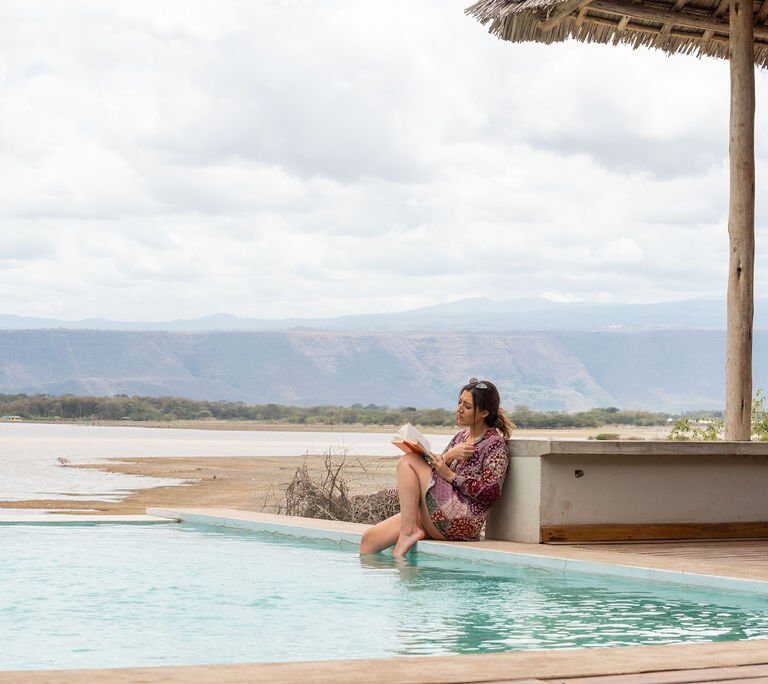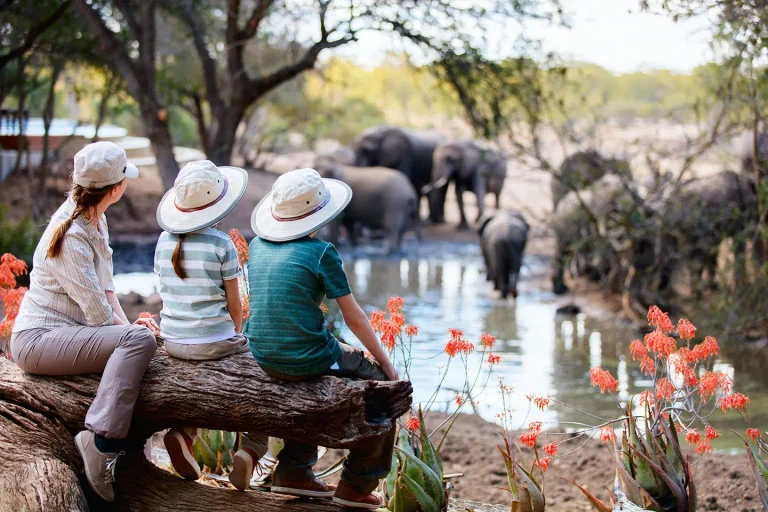Embarking on an adventure trip as a couple is more than just a vacation; it’s an opportunity to deepen your connection, challenge yourselves, and create a treasure trove of shared memories. Whether you dream of scaling rugged peaks, diving into vibrant underwater worlds, or navigating bustling foreign markets, the process of planning this ultimate journey can be an adventure in itself. It requires collaboration, compromise, and a shared vision.
To plan the ultimate couple’s adventure trip, start by discussing your interests and creating a budget together. Choose a destination that excites both of you and aligns with your budget. Next, tailor an itinerary that incorporates both your interests and allows for flexibility and spontaneity. Finally, don’t forget to pack essentials, research travel insurance, and confirm all bookings before your departure. This guide outlines ten essential steps to help you meticulously plan, prepare for, and ultimately enjoy the thrilling, bonding experience of your ultimate couple’s adventure trip.
1. Define Your Goals: What Does ‘Adventure’ Mean to You Both?
The very first step is to sit down, free from distractions, and have an honest, open conversation about what “adventure” truly means to each of you. This is the foundation upon which your entire trip will be built. Start by discussing what you both want to gain from this trip. Are you looking for relaxation, adventure, cultural experiences, or perhaps a mix? Establishing clear goals will help guide your decisions as you move forward with planning. Individual Desires. What kind of experiences ignite your personal sense of adventure? One partner might crave high-octane thrills like white-water rafting, while the other might prefer serene exploration, like kayaking through untouched fjords or wildlife tracking on foot.
Shared Vision. Look for overlaps and areas where you can compromise or combine interests. Perhaps it’s a safari with a gorilla trek add-on, or a multi-day hike followed by a relaxing cultural immersion. Challenge vs. Comfort. Discuss your comfort levels with physical exertion, remote locations, and varying degrees of luxury. Are you aiming for a strenuous, off-grid expedition or a more luxurious adventure that balances activity with relaxation? Budget & Time. Broadly discuss how much time you can dedicate and a general idea of the financial investment you’re comfortable with. This initial alignment ensures both partners are equally excited and invested in the direction of your journey.
2. Research and Choose a Destination: Where Will Your Story Unfold?
With your goals in mind, it’s time to explore potential destinations. Consider what type of environment you both enjoy – do you prefer tropical beaches, mountainous landscapes, or bustling urban settings? Research factors such as seasonal weather, local activities, and travel restrictions to narrow down your choices. Once your shared vision is clear, it’s time to translate it into a geographical reality. This phase involves extensive research to find the perfect backdrop for your adventure. Match Destination to Goals. If wildlife is paramount, consider Tanzania’s Serengeti or Ngorongoro. For mountain trekking, destinations, offer dramatic landscapes or the East African volcanoes (Kilimanjaro, Mount Kenya) might be called.
Best Time to Visit. Research the optimal seasons for your chosen activities. Consider weather patterns, wildlife migration cycles, and peak tourist seasons (which can impact crowds and prices). Accessibility & Logistics. Investigate how easy it is to get there, internal transportation options, and any visa requirements. Is it a self-drive destination, or will you rely on local transport and guides? Safety & Political Climate. Always check government travel advisories and local news for any safety concerns or political instability in your target regions. Thorough research helps refine your choice and avoids surprises down the line.
3. Craft a Balanced Itinerary: The Rhythm of Your Trip
Once you’ve settled on a destination, the next step is to create a well-rounded itinerary. Balance activity-packed days with some downtime to relax and enjoy each other’s company. Incorporate a mix of experiences – outdoor adventures, cultural visits, and leisure time to help maintain excitement without overwhelming yourselves. An ultimate adventure trip isn’t just about packing in as many activities as possible; it’s about creating a harmonious flow that balances excitement with rest. Pacing is Key. Avoid overscheduling. Factor in travel days between locations, dedicated rest days after strenuous activities (e.g., after a multi-day trek), and buffer days for unexpected delays or spontaneous detours.
Activity Integration. Weave your primary adventure activities into the itinerary, ensuring sufficient time for each without feeling rushed. For instance, a safari might involve early morning and late afternoon game drives, leaving midday for relaxation. Incorporate Diverse Experiences. Mix high-energy activities with cultural immersion, local exploration, or simply unwinding. A challenging hike followed by a few days on a pristine beach (like Zanzibar after a Tanzanian safari) can be the perfect combination. Outline Day-by-Day. Create a flexible day-by-day outline, noting key activities, estimated travel times, and accommodation locations. This serves as your blueprint.
4. Set a Realistic Budget: Funding Your Wildest Dreams
Create a budget that aligns with your travel goals and financial capabilities. Consider expenses like transportation, accommodation, meals, activities, and emergency funds. Be honest about what you can afford, and remember to allocate some extra for spontaneous activities that might arise during your trip. Adventure travel can be a significant investment, making a clear and shared financial plan essential. Comprehensive Cost Estimation. Account for all potential expenses: international flights, domestic transfers, accommodation (lodges, camps, hotels), activity fees (e.g., park entrance, guide fees, permits), gear rental/purchase, meals, drinks, visas, travel insurance, contingencies, and tips.
Shared Savings Goal. Determine how much you both need to save daily, weekly, or monthly. Set up a dedicated travel fund and hold each other accountable. Financial Compromises. If the initial budget is daunting, discuss where you can make adjustments without compromising the core experience. This could involve choosing a slightly shorter trip, opting for mid-range instead of luxury accommodations, or traveling during the shoulder season. Open communication about finances will prevent stress during the planning and the trip itself.
5. Book Flights and Accommodation: Solidifying Your Plans
Once you’ve nailed down the details of your trip, it’s time to book your flights and accommodations. Look for deals that fit your budget, and consider alternatives like vacation rentals or local housing options for a more intimate experience. Early bookings can often lead to better prices, so don’t hesitate! With your destination and budget in place, it’s time to make concrete bookings. Book Key Elements First. Secure international flights, major multi-day tours (like safaris or treks with operators), and primary accommodations well in advance, especially if traveling during peak seasons. This locks in prices and availability.
Flexibility. Where possible, choose flexible flight tickets or accommodation options with good cancellation policies. Unexpected events can happen, and having options can save money and stress. Direct Bookings vs. Agencies. Decide whether to book directly with airlines/hotels or use a reputable travel agent specializing in adventure travel, who can often secure better deals and provide expert advice. For complex adventure trips, a specialist agency is often invaluable.
6. Pack Smartly: Prepared for Every Turn
Packing can make or break your travel experience. Prepare a packing list that includes essentials tailored to your destination and planned activities. Consider the climate, expected activities, and duration of your trip while packing versatile clothing. Don’t forget essentials like travel documents, medications, and any shared items like cameras or chargers. Efficient and appropriate packing is critical for comfort, safety, and maneuverability on an adventure trip. Research Specific Gear. Each adventure type requires specific gear. A mountain trek needs different items than a beach and dive trip. Research comprehensive packing lists for your chosen activities.
Layering is Key. Pack versatile layers suitable for varying temperatures and conditions (e.g., moisture-wicking base layers, insulating mid-layers, waterproof/windproof outer shells). Quality Over Quantity. Invest in durable, high-quality items, especially for critical gear like hiking boots, backpacks, and waterproof outerwear. Share Where Possible. Coordinate with your partner on shared items (e.g., first aid kit, certain toiletries) to minimize individual packing weight and bulk. Luggage Restrictions. Be mindful of airline baggage allowances, especially for smaller, internal flights often used in adventure destinations (e.g., light aircraft to safari camps). Soft-sided duffel bags are usually preferred.
7. Prioritize Safety and Health: Mitigating the Unknowns
Safety should always be a priority when traveling. Research the destination for health concerns, local laws, and emergency contacts. Ensure that you both have appropriate travel insurance, and make copies of important documents. Stay informed about the local safety protocols and health guidelines to ensure a worry-free adventure. Adventure inherently involves some risk, but proactive planning minimizes it. Comprehensive Travel Insurance. This is non-negotiable. Purchase a policy that specifically covers emergency medical evacuation, trip cancellation/interruption, and the adventure activities you plan to undertake (e.g., high-altitude trekking, diving, rafting). Read the fine print! Health Consultations & Vaccinations. Visit your doctor or a specialized travel clinic well in advance (6-8 weeks prior) for all necessary vaccinations, malaria prophylaxis (if applicable), and advice on managing common travel ailments or any pre-existing conditions.
Emergency Plan. Create a shared document with emergency contacts, insurance policy numbers, passport copies, and any critical medical information. Share this with a trusted person at home. Local Safety Advice. Upon arrival, get local safety briefings from your guides or accommodation. Understand common scams or areas to avoid.
8. Personalize the Experience: Injecting Your Love Story
To make the trip truly memorable, infuse personal touches into your plans. This might mean revisiting a special spot from a previous trip, trying an activity you’ve always wanted to do, or indulging in a romantic dinner overlooking a beautiful view. Personalization enhances connection and creates lasting memories. While the adventure itself is thrilling, small personal touches can make the trip uniquely yours. Surprise Elements. Plan a small surprise for your partner – it could be a special dinner, a unique local experience, or a thoughtful gift. Shared Rituals. Establish a small ritual for the trip, like enjoying a sundowner together each evening, journaling your day’s highlights, or sharing a favorite snack at scenic viewpoints.
Photography. Discuss your photography goals. Will one of you be the designated photographer, or will you both capture moments? Consider bringing a small tripod for couples’ selfies in stunning landscapes. These personalizations weave your shared story into the fabric of the adventure.
9. Embrace Spontaneity: The Joy of the Unplanned
While it’s important to have a plan, allow room for spontaneity. Some of the best moments come from unplanned adventures, whether it’s stumbling upon a local festival, taking a scenic detour, or trying a newly discovered activity. Embrace the unexpected, and let the journey unfold organically. Even the most meticulously planned adventure trip benefits from a dose of flexibility. Leave Room. Don’t jam-pack every minute. Leave some free time in your itinerary for unexpected discoveries, local recommendations, or simply relaxing if you’re tired. Adapt to Changes. Adventure travel inevitably involves unforeseen circumstances – a flight delay, a sudden weather shift, or an unexpected closure. Practice patience and adaptability as a couple. View these hiccups as part of the adventure, not failures. Say “Yes” (Within Reason). Be open to new opportunities that arise, whether it’s an invitation from a local or a chance to try an unplanned activity.
10. Stay Connected: To Each Other and Beyond
Finally, remember to connect with each other throughout your trip. Put away devices from time to time and focus on enjoying the present moment together. Engage in meaningful conversations, take photos, and embrace the little moments that will enrich your adventure. While you’re unplugging from the everyday, maintaining connections is vital.
Digital Detox (Partial). Agree on times to put away devices and fully connect with each other and your surroundings. Communication on the Go. Ensure you have a plan for staying connected to loved ones at home (local SIM, Wi-Fi availability). Open Dialogue During the Trip. Check in with each other daily. How are you feeling? What’s your energy level? Are you enjoying yourself? Addressing concerns quickly prevents small issues from escalating. Celebrate Together. Take time each day to reflect on and celebrate the incredible moments you’re experiencing side-by-side.
Why Tanzania is the Perfect Honeymoon Safari Destination
The ultimate guide to planning your first safari adventure
What You Should Know Before Booking an African Vacation?
Ultimate Guide to Planning Your Dream Honeymoon Safari in Tanzania
Best African Safaris for Couples
Conclusion: A Bond Forged in Adventure
Planning the ultimate couple’s adventure trip is a journey of shared dreams, practical logistics, and exciting anticipation. By following these essential steps, you’re not just organizing a trip; you’re building a foundation of collaboration, resilience, and unforgettable shared experiences. These adventures, filled with breathtaking landscapes, exhilarating challenges, and moments of quiet connection, will undoubtedly strengthen your bond and provide a lifetime of stories to tell, proving that the greatest adventures are always better when shared.







